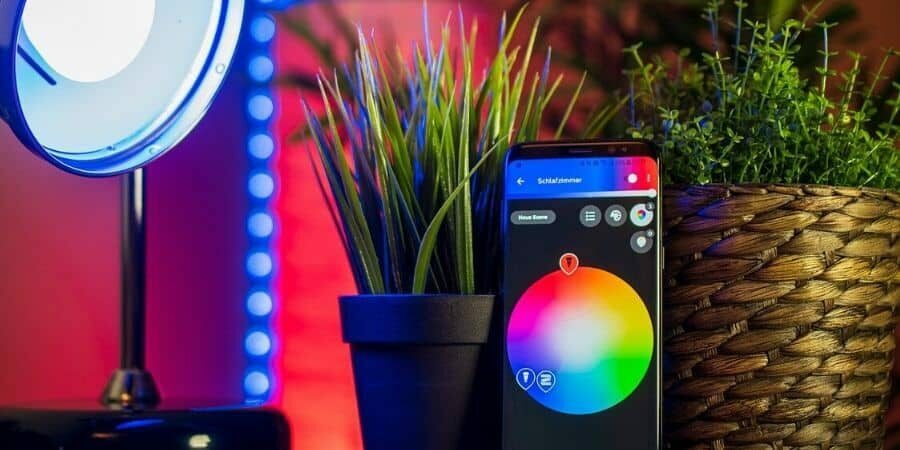What are the disadvantages of smart lighting?

Table of Contents
If you’re wondering whether to buy smart lighting, you might be weighing up the pros and cons.
The truth is, although there are lots of fantastic things about smart bulbs, they do have some drawbacks. Firstly, they are usually more expensive than standard filament bulbs and regular bulbs by quite a large amount. Prices start around $8-$10 for a single bulb, like this Wiz Tunable White A19 Wi-Fi Smart LED Bulb.
Prime Day may have closed its doors, but that hasn't stopped great deals from landing on the web's biggest online retailer. Here are all the best last chance savings from this year's Prime event.
- Sapphire 11348-03-20G Pulse AMD Radeon™ RX 9070 XT Was $779 Now $719
- AMD Ryzen 7 7800X3D 8-Core, 16-Thread Desktop Processor Was $449 Now $341
- Skytech King 95 Gaming PC Desktop, Ryzen 7 9800X3D 4.7 GHz Was $2,899 Now $2,599
- LG 77-Inch Class OLED evo AI 4K C5 Series Smart TV Was $3,696 Now $2,996
- AOC Laptop Computer 16GB RAM 512GB SSD Was $360.99 Now $306.84
- Lexar 2TB NM1090 w/HeatSink SSD PCIe Gen5x4 NVMe M.2 Was $281.97 Now $214.98
- Apple Watch Series 10 GPS + Cellular 42mm case Smartwatch Was $499.99 Now $379.99
- AMD Ryzen 9 5950X 16-core, 32-thread unlocked desktop processor Was $3199.99 Now $279.99
- Garmin vívoactive 5, Health and Fitness GPS Smartwatch Was $299.99 Now $190
*Prices and savings subject to change. Click through to get the current prices.
They are slightly more expensive to run compared to regular LED bulbs, as they require constant connection to the internet. This means you’ll be paying a tiny bit extra per smart bulb per month. However, it’s worth bearing in mind this will only be a couple of cents or pence . They are still cheaper in the long term than standard filament bulbs.
Another problem with smart lighting is that many of them need an internet connection to enable their ‘smart’ features. This means you’ll need a wi-fi connection on at all times. However, most smart bulbs come with a back up form of connection like Bluetooth, including these Philips Hue White and Color Ambiance A19 Bluetooth 75W Smart LED Bulbs.
Smart lighting also runs a slight risk of being hacked, thanks to its internet connection. Flaws in security software can be exploited. Once a virus is present in the device, it can jump to other devices connected to it on your home Wi-Fi network. There is a pretty low chance of this happening, however. Most smart lighting companies have worked hard to manufacture security software which prevents this.
What are the pros and cons of smart light bulbs?
As we have just outlined, there are some downsides to smart lighting. Their need for internet connection and the risk of being compromised might make them less desirable for the tech-averse, especially those not keen on the idea of a smart home system. They also are slightly more expensive than regular LED bulbs to run per month.
However, smart light bulbs are still cheaper to run than standard filament bulbs. They are more energy efficient in the long term. Plus, they have so many great features which makes them a worthy investment.
Endlessly customisable options of smart lights mean you can change their color, timing of when they come on, and more. Plus, with voice assistants and control from your mobile phone via app, you can change the lighting in your house simply and quickly – no matter where you are.
PC Guide Expert Opinion
Although we think they’re pretty great, there are obviously some disadvantages to smart lights. They can be expensive to initially buy, and are more expensive to run than regular LED bulbs. Plus, they require an internet connection to utilise the ‘smart’ features, which can leave them vulnerable to hackers.
However, the risk of hacking is low, and smart lights are not hugely more expensive to run compared to regular LEDS. They’re more efficient in the long term than filament bulbs too.
Although the initial cost might be high, we think the features of smart lighting make it worth the money.

